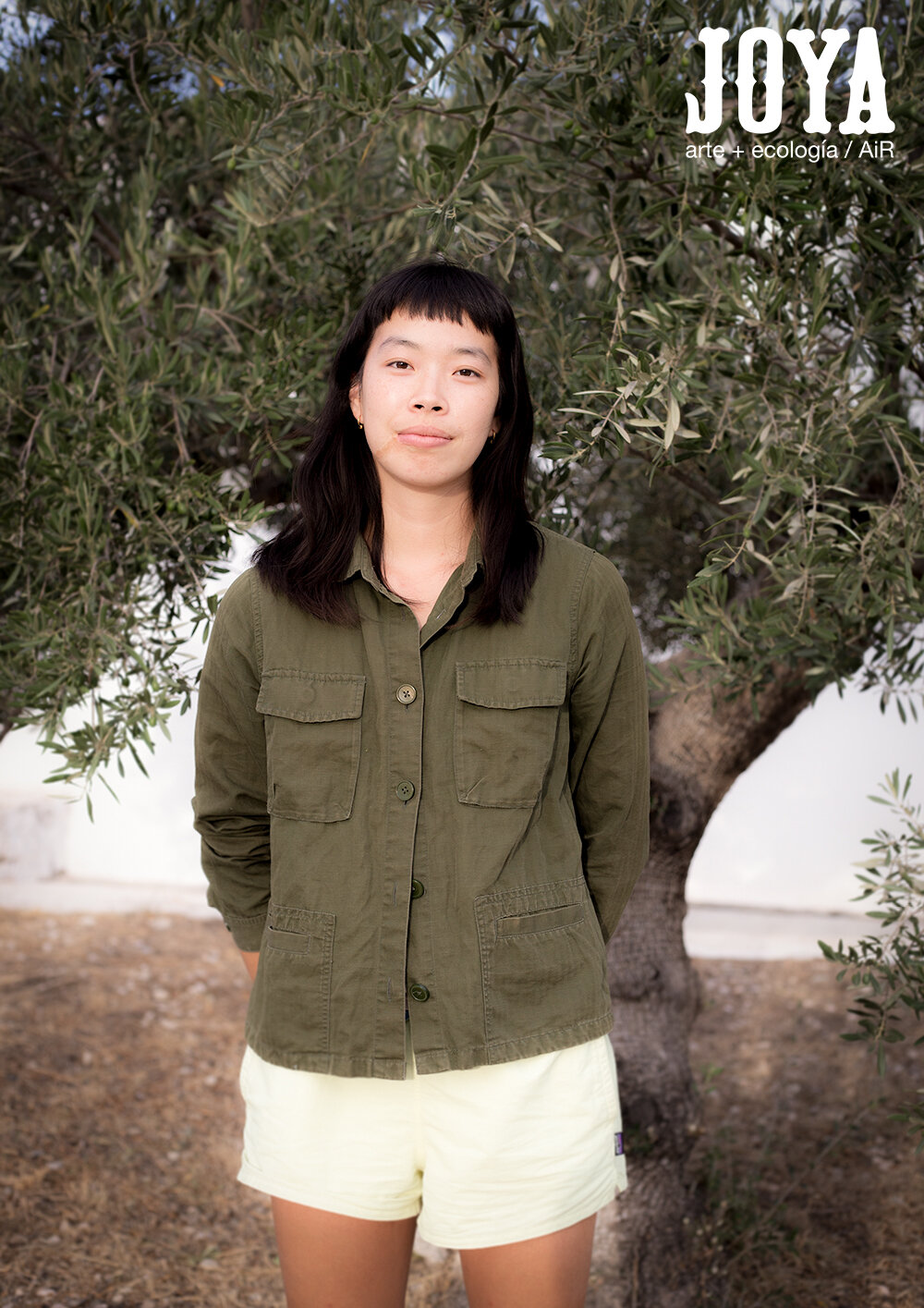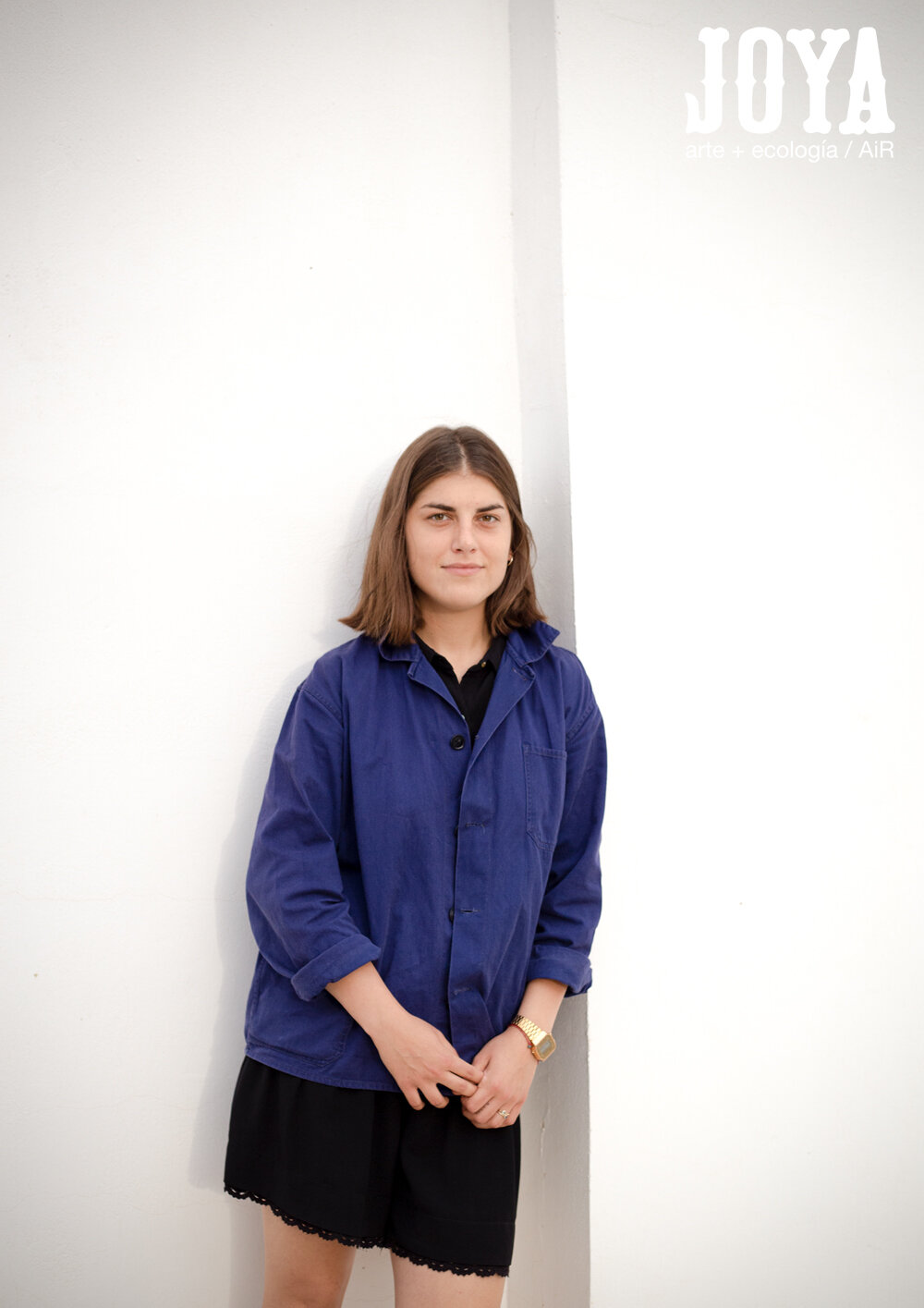photo Simon Beckmann
english translation below / traducción ingles al pie de pagina
“Otoño 2021
En el camino, Simon dice: ‘ahora ya puedes decir adiós a la civilización’!
Cuando llegué a Joya: AiR era de noche y la luz provenía del dosel celeste de estrellas, la luna estaba saliendo ... dentro de la casa alrededor del fuego estaban aquellos con los que compartiría mis siguientes 168 horas de residencia.
Entre idas y venidas tardaron 9 meses en llegar a ese día.
Simon mientras me lleva a dar un paseo para presentar el proyecto con los árboles frutales me pregunta:
¿cómo puedo ayudarte?
Le respondí: vine a hacer un compost.
Así comenzó mi narrativa simbiótica de días y noches en este lugar de los vientos.
Ocho cuadernos en mi maleta y en la nube un "diario de viaje" con ciento treinta y ocho paginas: año 2020.
Guías/mapas/coordenadas de pensamiento: borradores de proyectos: muchos no realizados, conversaciones escritas, apuntes de los más diversos estudios: libros, cursos, conferencias, practicas de meditación, sueños...
Me propuse generar energía creativa a partir de las memorias/transformación catalizadas por parámetros de los territorios materiales e inmateriales del paisaje y entorno de Joya: AiR para generar un proyecto que recibió el nombre de Compost: laboratorio vivo.
Somos parte de este Compost:
El inspirador proyecto de generar vida eco-evolutiva de nuestros anfitriones y guardianes Donna, Simon, Frida y FouFou, los estimulantes procesos/proyectos artísticos de cada uno de los residentes, las charlas en la cena donde nos reuníamos todos,
... la comida fresca, vitalizante e deliciosa preparada ceremoniosamente cada dia. ... todos los silencios y ruidos .... los colores.Las noches frías y los días calurosos ... la tierra con cicatrices y el ecosistema abundante ..., la convivencia empática de plantas, animales y humanos...el natural y postnatural.
Tengo los poros abiertos y un proyecto semilla alimentado por Joya: AiR. Y como dijo la bella Donna cuando me devolvió a Vélez Rubio:
¡Todo es una elección!”
Daniela Ruiz
Arquitecta y urbanista formada por la Fundación Armando Alvares Penteado - FAAP - SP en 2004.
2005 posgrado en Arquitectura, Imagen y Diseño en Elisava Escuela Universitaria en Barcelona, España.
2005 parte del grupo de arquitectos Bamboolab en colaboración con COAIB, UIB y ESB - Palma de Mallorca - España.
Formación en visual merchandising por SENAC-SP
Formación en permacultura por IPEC - Pirenópolis
Formación en Paisajismo Biodinámico con el Prof. Manfred Osterroht en Sao Paulo.
2007 hasta 2010 product development para la empresa Ethnix, en India, Vietnam, Filipinas y China
En enero de 2017 hasta 2018 periodo sabático y recibió el nombre de Our Own Way.
2017/2018 parte del equipo de periodistas de la revista Casa e Jardim manteniendo una columna digital sobre Our Own Way
En junio de 2019, vine a vivir en Barcelona.
Durante los últimos 15 años he tenido mi propio estudio en Sao Paulo, donde trabajo en colaboración con otros arquitectos y diseñadores en proyectos arquitectónicos y paisajísticos.
en inglés
“Autumn 2021
Along the way, Simon said: now you can say goodbye to civilization!
When I arrived at Joya: AiR it was night and the light came from the celestial canopy of stars, the moon was rising ... inside the house around the fire were those with whom I would share my next 168 hours in residence.
Between comings and goings it took 9 months to get to that day.
Simon while taking me for a walk to present the project with fruit trees asks me:
‘how can I help you’?
I replied: I came to make a compost.
Thus began my symbiotic narrative of days and nights in this place of the winds.
Eight notebooks in my suitcase and in the cloud a "travel diary" with one hundred and thirty-eight pages: year 2020.
Guides / maps / thought coordinates: project drafts: many unrealized, written conversations, notes from the most diverse studies: books, courses, conferences, meditation practices, dreams ...
I set out to generate creative energy from memories / transformation catalyzed by parameters of the material and immaterial territories of the Joya landscape and environment to generate a project that received the name Compost: Living Laboratory.
We are part of this Compost:
The inspiring project of generating eco-evolutionary life of our hosts and guardians Donna, Simon, Frida and FouFou, the stimulating artistic processes / projects of each of the residents, the talks at dinner where we all met,
... fresh, invigorating and delicious food prepared ceremoniously every day. ... all the silences and noises ... the colors, the cold nights and hot days ... the scarred land and the abundant ecosystem ..., the empathic coexistence of plants, animals and humans ... the natural and postnatural.
I have open pores and a seed project powered by Joya: AiR. And as the beautiful Donna said when she gave me back to Vélez Rubio:
Everything is a choice”!
Daniela Ruiz

























































